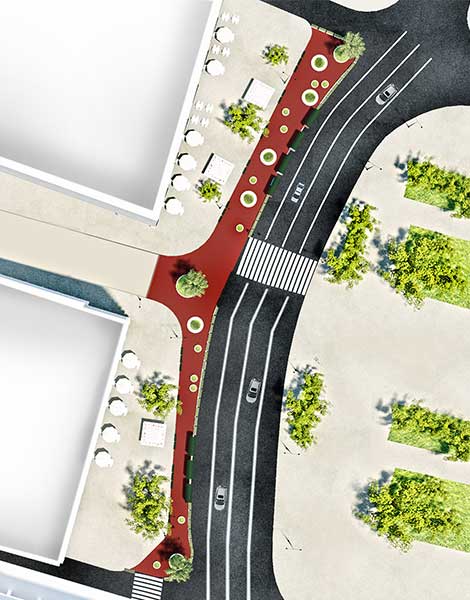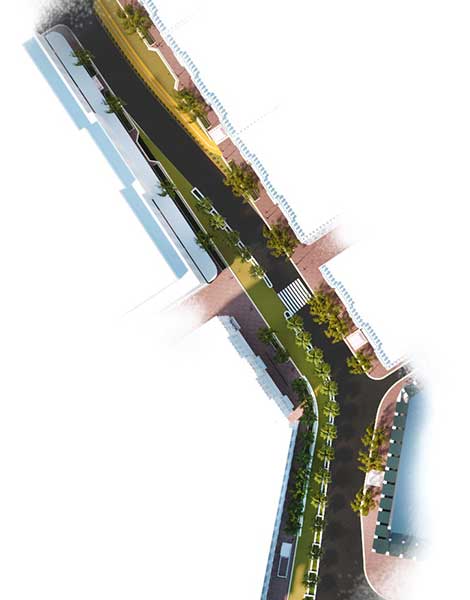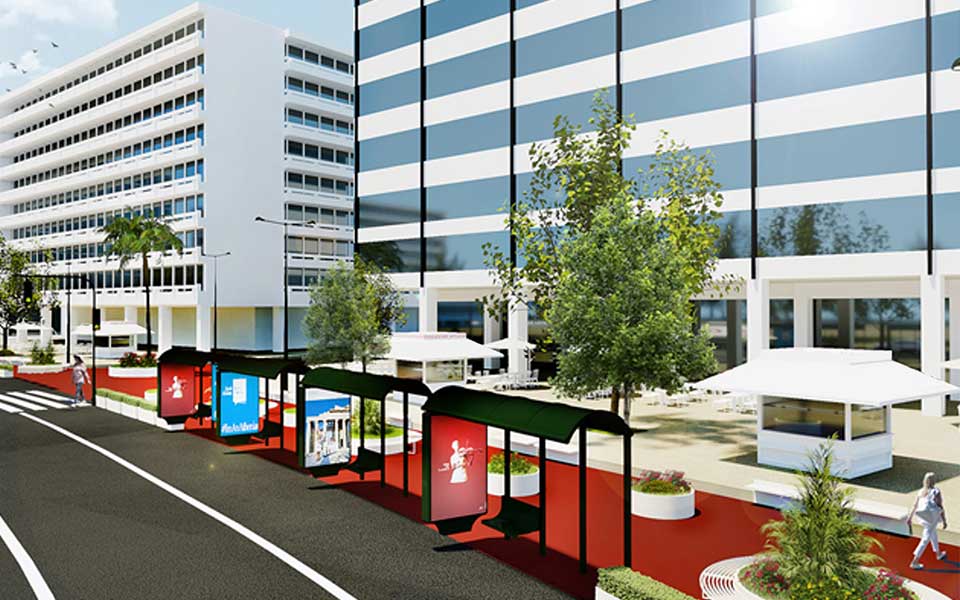The Athens Municipal Council breathed new life into a project on Monday to create a large traffic-free zone in Athens when it approved a proposal for an extended pedestrian network and a drastic reduction of cars in the city center. The plan is part of a longstanding ambitious vision which lost momentum at the end of the previous decade and was shelved.
Following the example of many large and small European cities which have sought to capitalize on the silver lining of the coronavirus pandemic by introducing new traffic restrictions, Athens will be taking immediate, aggressive measures within a month for the benefit of pedestrians and bicycles.
“During this period, a number of cities around the world, from London and Berlin to Bogota, have decided to take a series of emergency measures to deal with the pandemic,” Athens Mayor Kostas Bakoyannis told Monday’s city council meeting.
“We want more public space so we can practice social distancing, as well as to give priority to pedestrians, bicycles and new means of personalized transport, and to safeguard public health and the environment by not allowing roads to be flooded again by cars,” he added, insisting that there is a deep need among citizens to live in a people-friendly city.
The plan, which will be the most extensive intervention in the capital in a decade, foresees cars being banned from two large sections of the city center: the so-called Commercial Triangle and the iconic area of Plaka. Permanent residents and service vehicles will be exempt from the ban.
What’s more, key streets such as Mitropoleos, Irodou Attikou, the rest of partially-pedestrianized Ermou and Athinas will also become car-free.
In addition, vehicular traffic will be drastically restricted on Panepistimiou Avenue, with the widening of sidewalks and the creation of new ones, while Vasilissis Olgas Avenue will be pedestrianized.

According to Bakoyannis, the main interventions envisioned in the plan are included in a special zoning plan which will be put up for public consultation in June.
However, even before the overall plan is approved by all relevant authorities and the municipality conducts the necessary tenders for the implementation of most projects, the new restrictions will be implemented on a temporary basis.
This means traffic will be restricted by the municipal police and electronic means (such as the use of cameras). The extra space for pedestrians and bicycles will be created using temporary means (e.g. planters, urban furniture, construction site equipment etc).


The “Great Walk of Athens”
The plan will complement older interventions in the Greek capital to form what has been dubbed the “Great Walk of Athens”. The new measures will affect 6.3km of central Athens’ roads that, until the onset of the pandemic lockdown measures, saw high levels of daily vehicular traffic.
Permanent residents and service vehicles will continue to move freely in the center, while 1.9km of new bus lanes will be created.
More specifically, the plan foresees the following changes:
Panepistimiou St – Patision St
Three of the six lanes of Panepistimiou St will be pedestrianized, with existing pavements extended. One lane will be converted into a bike lane, leaving two lanes for the free movement of vehicles.
At the same time, there will be interventions on Patision St, from Omonia Square to Aigyptou Square, in order to better connect the National Archaeological Museum with Athens’ other cultural sites such as the Acropolis as part of Athens’ Great Walk.
Syntagma Square
The pavements will be extended along Filellinon St on Syntagma Square (i.e. where Ermou St begins). Of the existing six lanes, three lanes will remain for vehicular traffic, with a new bus lane and stopping zone between Ermou and Mitropoleos.

Vasilissis Olgas Avenue
This thoroughfare will be pedestrianized, with only public transport (trams and trolleys) permitted. Thus the area of Zappeion and the National Garden will be unified with the Temple of Olympian Zeus, and the pedestrianized street of Dionysiou Areopagitou will be connected with the Panathaneic Stadium. It is estimated that this will create 10,500 sq. m. of new public space for pedestrians.
Athinas St / Ermou St
The entirety of Athinas St, and the portion of Ermou St that has not yet been pedestrianized will no longer be open to cars, with only buses moving along these roads in dedicated lanes. Only permanent residents, service vehicles, and vehicles moving to and from dedicated parking areas will be permitted.
Irodou Attiki St
The same restrictions as above will apply here. It is estimated that 5,000 sq m of new public space will be created.
Mitropoleos St
The same restrictions on vehicular traffic as above will apply. Effectively in combination with the new restrictions on Ermou, this means that the free movement of vehicles will no longer be allowed in the Athens downtown area between Syntagma and Monastiraki.

The Research Behind the Plan
What will be the consequences of the temporary measures in the city center on traffic? Researchers at the National Technical University of Athens (NTUA) maintain that the time added to car journeys in the downtown area will be limited and will primarily concern a limited number of streets. At the same time, the reduction in travel times for buses and other forms of public transport will be impressive, as will safety improvements for pedestrians and cyclists.
A collaboration about the plan between the City of Athens and the Department of Transportation Planning and Engineering of NTUA’s School of Civil Engineering began last November. The department took on the task of analyzing different scenarios, assessing their impact in order to identify the optimum solution.
“We began from the basic city planning choices of the Municipality of Athens,” the department’s head Giorgos Giannis told Kathimerini. “The initial goal, before the coronavirus was to complete our proposals in the summer. That said, this period gave us the opportunity to implement our proposals on a trail basis. The philosophy is simple: more public space needs to be given over to pedestrians at the expense of vehicles. So we therefore need wider pavements and more organized planning for bicycles, and to prioritize public transport.”
And how many parking spaces will be lost? “The interventions will not affect parking but access to it. Permanent residents and all those who supply the areas will move as normal.”
And for cyclists, the news is only good: “We will be implementing a double system: We will create bike lanes on Panepistimiou, Athinas and Ermou streets and will allow bicycles on all of the roads that are closing to cars. As such they will be able to move about with safety.”
According to Giorgos Giannis, the overall impact on traffic will be limited, with cars normally traveling through the center forced to take other routes (or be replaced by journeys using public transport).
“72% of the traffic today in the center is through traffic, it doesn’t have a starting or end point in the center. This percentage needs to be reduced,” he said.
“Our interventions have a local character. In my opinion, we mustn’t miss the opportunity, as happened in 2004 [during the Olympic Games] when the center was temporarily freed, but then reconquered by cars.”
This is an edited version of an article first published in Greek at kathimerini.gr










